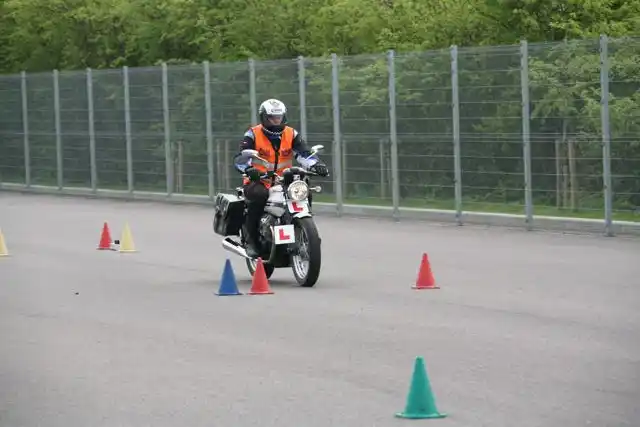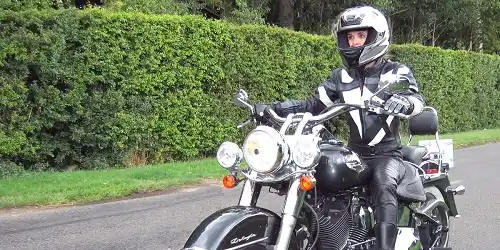Book motorbike training in Horncastle, Lincolnshire with any of the companies listed here
Click on any of the motorcycle training schools below to view more information and check availability.
Motorcycle Rider Training Spilsby
Unit 1b, Ashby Road Business Park, Spilsby, Lincolnshire, PE23 5DW
Approx. distance: 9 miles
Access Rider Training Boston
Braybrooks Yard, Stickney, Boston, Lincolnshire, PE22 8AY
Approx. distance: 9.3 miles
Walts Motorcycle Training Lincoln
Old Spa Showrooms, Lincoln, Lincolnshire, LN3 4NH
Approx. distance: 16.5 miles
GP Training Centre Scunthorpe
Warren Road, Scunthorpe, North Lincolnshire, DN15 6XH
Approx. distance: 34.9 miles
Ride Right Motorcycle Training Scunthorpe
Unit 5, Normanby Park Workshops, Scunthorpe, Lincolnshire, DN15 8QZ
Approx. distance: 35.9 miles
MSM Motorcycle Training Hull
Hull Karting, Poorhouse Lane, Hull, Kingston upon Hull, HU9 5HE
Approx. distance: 38.4 miles
MICKS Kings Lynn
Queensway, King's Lynn, Norfolk, PE30 4AW
Approx. distance: 38.5 miles
C and A Motorcycle Training Kings Lynn
Willow Business Park, Kings Lynn, Norfolk, PE34 3RD
Approx. distance: 39.1 miles
Road Train Edwinstowe
Edwinstowe House, High Street, Edwinstowe, Nottinghamshire, NG21 9PR
Approx. distance: 39.6 miles
Ideal Motorcycle Training Hull
Pearson Way, Kingston upon Hull, Hull, Kingston upon Hull, HU6 7QA
Approx. distance: 39.9 miles

Find motorbike training in Horncastle, Lincolnshire
Are you trying to book your motorcycle training in Horncastle or close by in Coningsby, Spilsby and Wragby? Here at BookCBTNow we are one of the most trusted sources of online booking for motorcycle training companies. We can help you find your local training company and help you get your training for the A1, A2 or DAS motorcycle test.
What are the different types of motorcycle licence I can get in Horncastle?
There are 4 main types of full motorcycle licence issued by the DVSA. The first three (AM, A1 and A2 motorcycle licences) have restrictions on the type of moped or motorcycle you can ride, the fourth (the full A motorcycle licence) has no restrictions.
The AM restricted moped licence
The A1 restricted motorcycle licence
The minimum age to take this test is 17. According to the DVSA website it will allow you to ride a "Light motorcycle up to 11 kW (and a power-to-weight ratio not more than 0.1 kW per kg) and 125 cc". This means it's up to a 125 cc motorcycle with some restrictions to make sure it cannot accelerate too fast - a really good idea when you are new to riding a motorbike!
Requirements to take the A1 motorcycle test - You must have a UK provisional or full driving licence, a valid theory test certificate and a valid CBT certificate. Once you have taken this test you will not have to keep renewing your CBT certificate every 2 years, you can ride on motorways and you can take a pillion passenger on the back of your motorbike.
The A2 restricted motorcycle licence
For this licence you need to be at least 19 years of age, have completed your CBT or have had an A1 licence for at least 2 years. As with the A1 test you also need to have a UK provisional or full driving licence and a valid theory test certificate . The main benefit of getting an A2 licence is you can ride a more powerful motorcycle. The law states a "standard motorcycle up to 35 kW (and a power-to-weight ratio not more than 0.2 kW per kg)". So it's a more powerful bike, but still not completely un-restricted. To find A2 legal motorbikes you are best visiting your local motorcycle dealer and asking them to show you the A2 legal bikes, as otherwise it's very difficult to work out just looking at the tech specs.
The full A motorcycle licence, or DAS licence.
This is the licence that allows you to ride almost any motorcycle without restrictions, so it's the ultimate motorcycle licence. No limits on power outputs or power per kg or engine size! It is also called a 'DAS' licence as it can be obtained from the 'Direct AccesS' route. There are two ways you can get this licence:
1) If you are 24 or over you can take the tests for an A licence. You must also have a UK provisional or full driving licence, a valid theory test certificate and a valid CBT certificate.
2) If you are at least 21 years of age and you have held an A2 category licence for at least 2 years. This is sometimes referred to as the 'progressive access' route as you progress from one licence to another.
When taking the test the biggest difference is that you have to use a bigger, more powerful motorcycle. It will have a power of at least 40kw and an engine cc of at least 595 cc. Your local training school will make sure you have the right size bike for your test.
There is also a flowchart (click here) that the DVLA have produced that shows these different licences and how to obtain them.
To get more detailed guidance on what licence is right for you then talk to your local motorcycle training school. You can search for them here and they are qualified to speak to you on the right type of training for you.
If I have a full car driving licence what motorcycle can I ride?
This depends on when you passed your driving test:
If you passed your car driving test before 1st February 2001
In this case you can ride a moped up to 50 cc without Learner plates and without needing a CBT. If you want to ride anything bigger then you will need to get your CBT certificate. Then you will be able to ride a restricted motorcycle up to 125 cc with Learner plates displayed.
If you passed your driving test on or after 1st February 2001
You must obtain a CBT certificate before you can ride anything. Once completed you can ride a moped or restricted motorcycle up to 125 cc.

When can I take a pillion passenger on the back of my motorcycle?
In order to carry someone on the back of your motorbike you need to have a full motorcycle licence. This means one of the AM, A1, A2 or full A (also known as DAS) licences. This means that you cannot carry a pillion passenger if you only have a provisional licence, even if you have done a CBT. A CBT is not enough for you to take a pillion under any circumstances.
Even when you have passed your full motorcycle test you will need to make sure your motorcycle is properly equipped to take a pillion. As the rider you are legally responsible for your passenger, so it is very much in your interests to make sure your motorcycle is properly equipped. This means making sure there is a proper seat with foot rests and grab rail to hold on to. Your passenger must also wear a safety helmet (as well as all the other protective clothing!). Don't forget also that riding a motorcycle with a pillion is quite different than riding solo, so read up about the changes you need to make to your motorbike and riding style before attempting to take a pillion passenger.
What can I ride on a provisional driving licence in Horncastle?
A provisional driving licence is not a full driving licence so you are limited in what you can ride. So, when you first come to ride a motorcycle the DVSA will issue you with a provisional driving licence. What you can ride will depend on your age.
Age 16
You must complete a CBT and then you can ride a moped or scooter up to 50 cc and with a top speed of no more than 28 mph. You must display L plates, you cannot carry a pillion passenger and you must not ride on a motorway.
Age 17 or over
You must complete a CBT and then you can ride a restricted motorcycle up to 125 cc. You must display L plates, you cannot carry a pillion passenger and you must not ride on a motorway.
Do you have a full car driving licence?
If you already have a full car driving licence then this automatically gives you provisional entitlement for riding a motorcycle. So, priovided you get your CBT certificate then you can ride a moped or motorcycle as mentioned above according to your age.